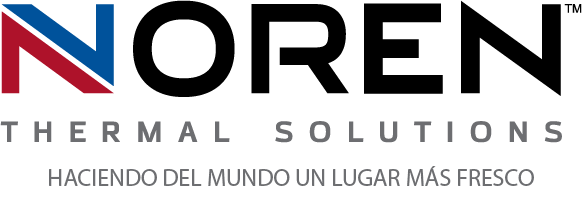 When companies operate in particularly hazardous locations, as they do within oil and gas manufacturing and several other industries, technological advancement isn’t always as straightforward as it is in other industries. The area of thermal management is an excellent example of this. In most industries, streamlining electrical cooling has been simple thanks to advanced solutions such as heat exchangers, which are designed to prevent electrical overheating by absorbing and redirecting electrical waste heat. However, their simpler and more streamlined designs don’t necessarily make heat exchangers viable for use in hazardous locations. To do that, the innovative units must be designed specifically to operate in much harsher conditions.
When companies operate in particularly hazardous locations, as they do within oil and gas manufacturing and several other industries, technological advancement isn’t always as straightforward as it is in other industries. The area of thermal management is an excellent example of this. In most industries, streamlining electrical cooling has been simple thanks to advanced solutions such as heat exchangers, which are designed to prevent electrical overheating by absorbing and redirecting electrical waste heat. However, their simpler and more streamlined designs don’t necessarily make heat exchangers viable for use in hazardous locations. To do that, the innovative units must be designed specifically to operate in much harsher conditions.
How other industries have improved thermal management
The slower adoption of more streamlined electrical cooling methods in some industries hasn’t been due to a lack of results from such methods. In most other industries, the use of heat exchangers and their ability to provide more efficient thermal management solutions has proven highly advantageous for every company that adopts them. Compared to cooling methods such as air conditioning or air compression, the heat transfer techniques used by heat exchangers have improved thermal management in several ways, including lowering costs and boosting efficiency. For industries in hazardous locations, it’s the increased need for additional safety and security features, such as UL/cUL, ATEX, and IECEx standards for electrical enclosures, that have made it more challenging to streamline electrical cooling.
The challenges that come with hazardous locations
In typical industrial and other applications, safety is an important factor in the quality of any given electrical cooling system. The cooling system itself must provide at least equal protection against common contaminants, dust, and moisture in the air as the enclosure it’s cooling to maintain the integrity of both systems. Employees who work near and/or service the electrical cooling units must also be protected by ensuring the heat exchanger is properly attached to the enclosure. In applications that are deployed in hazardous locations, contaminants in the air can also be extremely dangerous, combustible, toxic, and more. Without adequate protective measures, an application and its cooling system can fall under a significant threat of disaster.
Implementing heat exchangers that meet those challenges
Despite these challenges, companies that operate in hazardous locations still require efficient, safe, and eco-friendly cooling solutions to keep up with modern innovations. Custom heat exchangers and those designed specifically for hazardous locations (known as HazLoc heat exchangers) offer the more advanced and streamlined heat transfer methods of modern heat exchangers, but are housed with in extremely durable cooling units that are made to meet UL/cUL, ATEX, and IECEx standards.
For more information about streamlined electrical cooling in hazardous locations, call Noren Thermal Solutions in Taylor, TX, at 866-936-6736.







